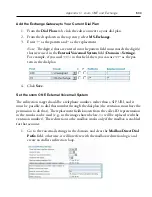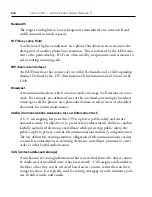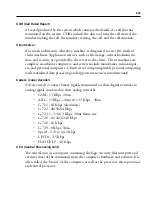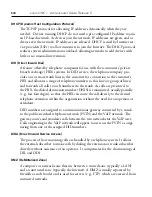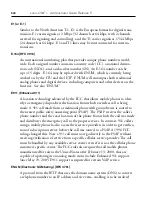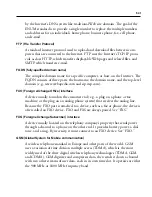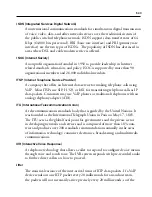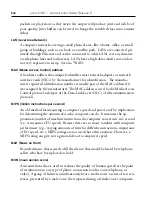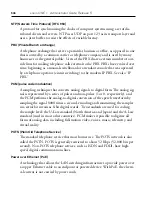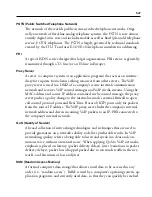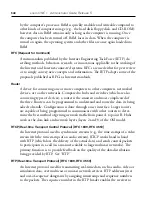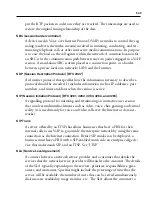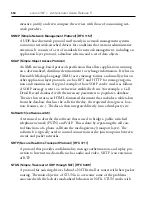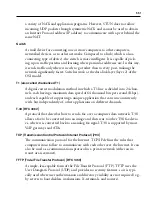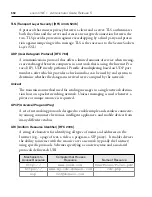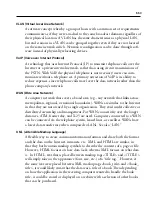
547
PSTN (Public Switched Telephone Network)
The network of the world’s public circuit-switched telephone networks. Origi-
nally a network of fixed-line analog telephone systems, the PSTN is now almost
entirely digital in its core and includes mobile as well as fixed (plain old telephone
service, POTS) telephones. The PSTN is largely governed by technical standards
created by the ITU-T, and uses E.163/E.164 telephone numbers for addressing.
PRI
A type of ISDN service designed for larger organizations. PRI service is generally
transmitted through a T-1 line (or an E1 line in Europe).
Proxy Server
A server (a computer system or an application program) that acts as an interme-
diary for requests from clients seeking resources from other servers. The VoIP
proxy server is used in a DMZ of a company’s secure internal communication
network and receives VoIP control messages and VoIP media streams. Using the
MAC address and source IP address contained in the control message, the proxy
server pushes a policy change to the internal network’s external firewall to open
call control protocol ports and Real Time Protocol (RTP) ports only for packets
from the source IP address. The VoIP proxy server hides the company’s internal
network address and directs incoming VoIP packets to an IP-PBX connected to
the company’s internal network.
QoS (Quality of Service)
A broad collection of networking technologies and techniques that are used to
provide guarantees on a network’s ability to deliver predictable results. In VoIP
networking, quality refers to being able to listen and speak in a clear and con-
tinuous voice, without unwanted noise. When applying QoS to VoIP networks,
emphasis is placed on latency (packet delivery delays), jitter (variations in packet
delivery delays), packet loss (dropped packed due to too much traffic in the net-
work), and burstiness of loss and jitter.
RAM (Random Access Memory)
A form of computer data storage that allows stored data to be accessed in any
order (i.e., “random access”). RAM is used by a computer’s operating system, ap-
plication programs, and currently used data, so that they can quickly be reached
Содержание ONE IP
Страница 4: ......
Страница 19: ...Part I Getting Started...
Страница 20: ...Part I Getting Started...
Страница 47: ...Part II Administering the System...
Страница 48: ...Part II Administering the System...
Страница 195: ...Deploying the snom ONE IP Telephone System 526...
Страница 201: ...Deploying the snom ONE IP Telephone System 532 Figure C 1 Trunk Settings for Configuration with Exchange 2007 2010 UM...
Страница 223: ......

